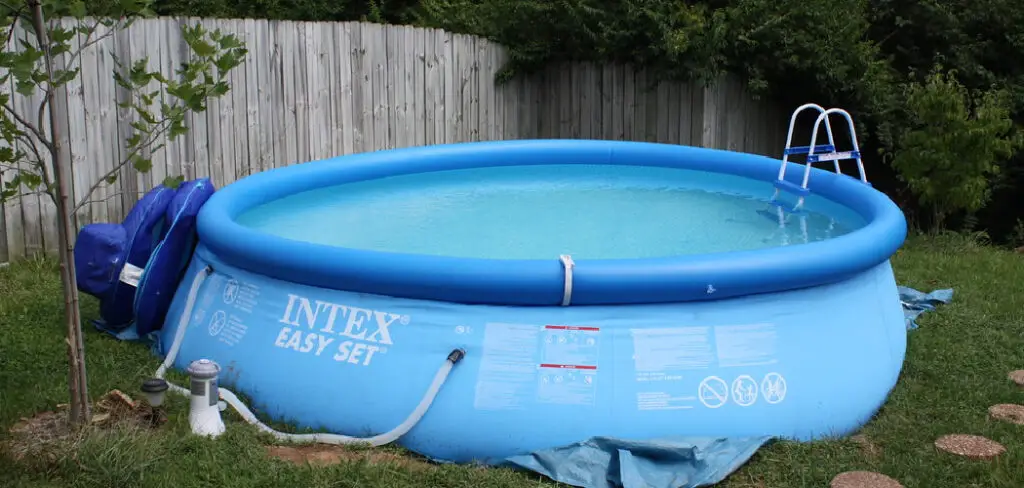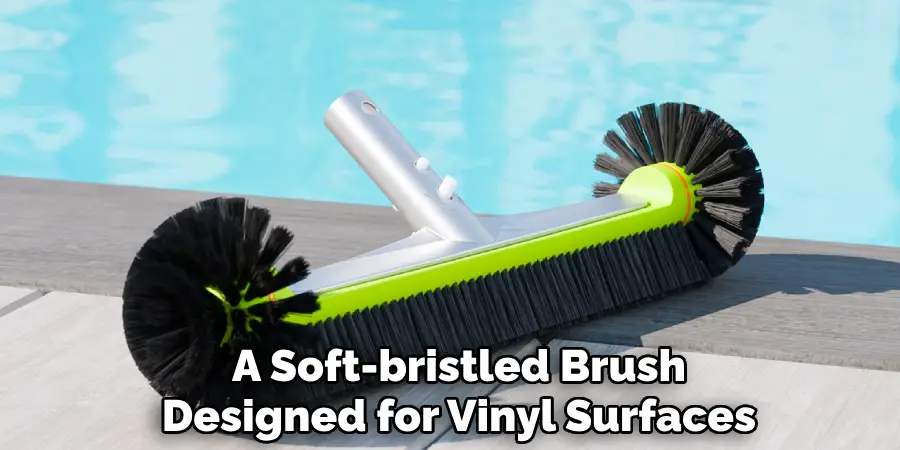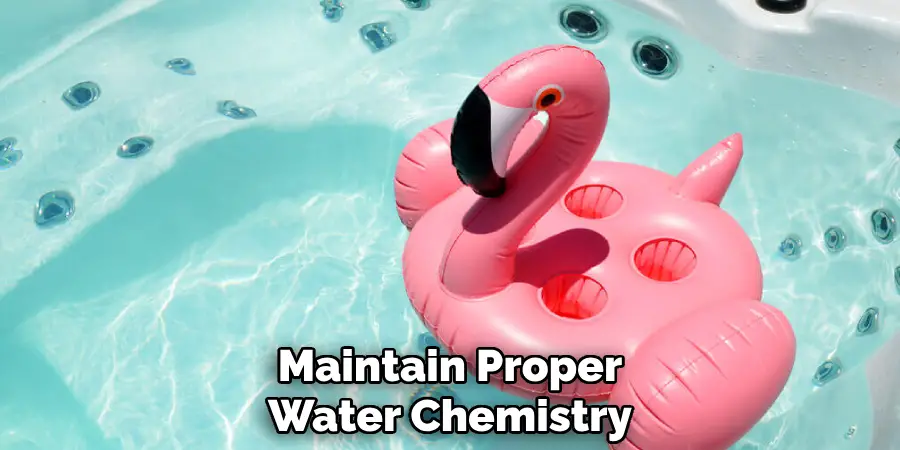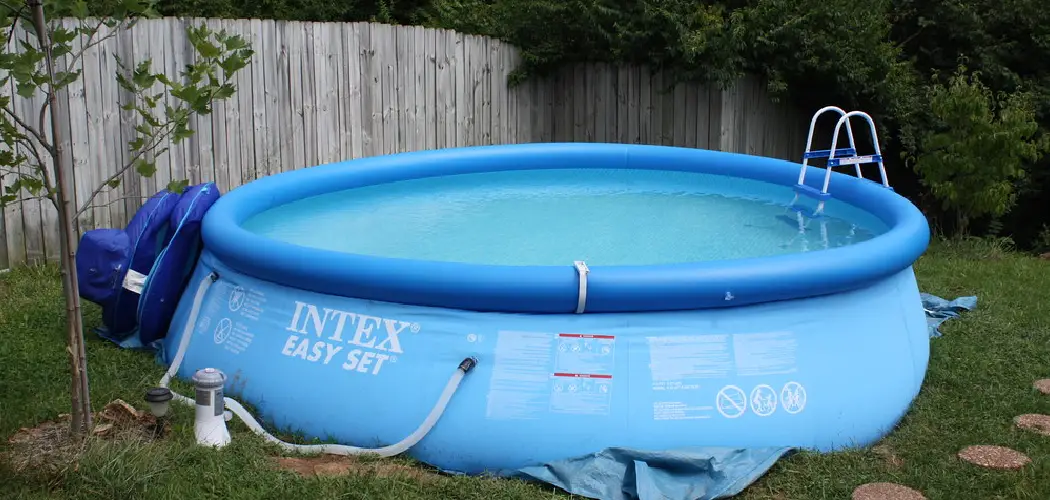Maintaining a clean and safe pool is essential for ensuring a healthy swimming environment, and mold growth can be a common yet frustrating issue for pool owners.

Mold not only affects the appearance of your pool but can also pose potential health risks if not addressed promptly. Cleaning mold off an Intex pool requires the right techniques and tools to remove the growth effectively without damaging the pool material. This guide will walk you through the steps of how to clean mold off intex pool.
What Causes Mold in an Intex Pool?
Mold in an Intex pool typically develops due to the presence of moisture combined with organic debris, such as leaves, dirt, or algae, that serve as a food source for mold spores. Poor water circulation and inadequate cleaning routines can create stagnant areas where mold is more likely to grow.
Additionally, insufficient levels of chlorine or other sanitizers can allow mold and other microorganisms to thrive. Environmental factors like high humidity, warm temperatures, and lack of direct sunlight can further accelerate the growth of mold in and around your pool. Understanding these causes is an important first step in preventing and managing mold in your pool.
Signs of Mold on or in an Intex Pool
Identifying mold in or around your Intex pool requires careful observation for specific signs. One of the most common indicators is the presence of black, green, or dark brown spots forming on the pool walls, floors, or floating surfaces. These spots may vary in size and can sometimes resemble stains or dirt patches.
Another sign of mold is the development of a slippery or slimy texture on pool surfaces, which is a result of biofilm formation. Additionally, persistent musty odors near the pool area can be a warning of microbial growth, including mold.
If you notice cloudy or discolored water that doesn’t clear up despite proper pool maintenance, mold could be contributing to the issue. Regularly inspecting your pool for these signs can help detect mold early and prevent further complications.
10 Methods How to Clean Mold off Intex Pool
1. Identify and Isolate Mold-Affected Areas First
Before diving into cleaning, take time to thoroughly inspect your Intex pool to identify all mold-affected spots. Mold commonly grows along seams, under the top ring, near the waterline, or on the pool floor if debris has been left undisturbed.

If the pool is deflated or empty, check the folds and rolled-up vinyl, as mold thrives in moist crevices. Isolating these areas helps you target your efforts efficiently, ensuring no patches are missed during cleaning.
2. Rinse with Clean Water to Remove Loose Debris and Dirt
Once you’ve identified moldy areas, begin by rinsing the pool surface with fresh, clean water. Use a garden hose with a gentle spray nozzle to dislodge surface dirt and any loose mold spores.
This step is essential before applying any cleaning solutions, as it softens buildup and prevents abrasive particles from scratching the vinyl when you start scrubbing. For pools in storage or partially drained, a bucket of water and a sponge can also work effectively.
3. Scrub with a Mild Dish Soap and Water Solution
One of the safest ways to start cleaning mold off an Intex pool is with a simple mixture of mild dish soap and warm water. Fill a bucket with this solution and use a non-abrasive sponge or cloth to gently scrub the moldy areas.
Soap helps break down surface oils and light organic matter while loosening mold’s grip on the vinyl. This method is especially suitable for early mold stains or regular maintenance. Rinse thoroughly afterward to avoid soap residue.
4. Apply a Vinegar Solution for Natural Mold Removal
White vinegar is a natural mold killer and a great alternative to harsher chemicals. Mix a solution of equal parts white vinegar and water, and apply it directly to the moldy areas using a spray bottle or sponge.

Let it sit for 10–15 minutes so the acetic acid can penetrate and break down the mold’s roots. Scrub with a soft brush or sponge and rinse well. Vinegar is safe for vinyl and environmentally friendly, making it ideal for regular mold maintenance.
5. Use a Diluted Bleach Solution for Heavy Mold Infestation
When facing heavy or widespread mold growth, a diluted bleach solution (1 part bleach to 10 parts water) is a powerful disinfectant. Apply it cautiously with a sponge or spray bottle to mold-covered areas.
Allow it to sit for 5–10 minutes before scrubbing with a soft brush. Bleach kills mold spores at their root and brightens stained vinyl. Always rinse thoroughly after using bleach to prevent any chemical residue from lingering, and wear gloves and eye protection during use.
6. Try a Pool-Safe Mold and Mildew Remover
Commercially available pool-safe mold and mildew removers are formulated specifically for vinyl pool surfaces. These products are effective at breaking down mold without damaging the material or upsetting pool chemistry. Look for biodegradable or non-toxic labels, and follow the manufacturer’s instructions.
These cleaners often require only light scrubbing and can be ideal for frequent users or seasonal cleanups. They’re especially effective along seams, filter valves, or under the top inflatable ring where mold tends to hide.
7. Use a Soft-Bristled Brush for Scrubbing Without Damage
Regardless of the cleaner you choose, the type of brush you use matters greatly. A soft-bristled brush or a pool sponge designed for vinyl surfaces ensures that you scrub effectively without tearing or scratching the pool liner. Avoid stiff-bristled brushes or metal scrubbers, which can cause permanent damage to the pool’s walls. For textured or patterned vinyl surfaces, brushes can get into grooves and remove embedded mold better than cloth alone.
8. Clean the Pool Frame and Accessories Too
Mold doesn’t only grow on pool walls—it can also thrive on frames, ladders, hoses, and inflatables stored near the pool. As you clean the Intex pool, be sure to wipe down all accessories and structural components.

Use the same vinegar or soap solution to clean hard surfaces, and let them dry fully before storage. Mold spores can transfer from these accessories back to the clean pool if not treated. Consider placing cleaned items in the sun afterward for added sterilization.
9. Let the Pool Dry Completely Before Refilling or Storage
Once all visible mold is removed and the pool is rinsed, allow it to air dry completely. Sunlight naturally helps to kill mold spores, so if possible, dry the pool in direct sunlight. Make sure no moisture remains in the folds, seams, or on the bottom if you’re planning to store the pool.
For standing pools, run the filter system and circulate fresh water to ensure the interior dries out well. This step is key in preventing the mold from quickly returning.
10. Prevent Future Mold Growth with Routine Maintenance
Cleaning mold once is not enough—it’s equally important to prevent future mold buildup. Maintain proper water chemistry (chlorine, pH, and alkalinity) to deter mold and algae. Use a pool cover to reduce debris and prevent organic contamination.
Weekly brushing, vacuuming, and skimming remove dirt and moisture where mold would otherwise thrive. If storing the pool, ensure it is completely dry, clean, and kept in a dry, ventilated area. For long-term storage, add a few silica gel packs or moisture absorbers in the fold to absorb any residual humidity.
Things to Consider
When maintaining your pool, it is essential to stay consistent with your cleaning routine and regularly inspect for any signs of mold or damage. Ensure all pool maintenance tools are clean and stored properly to avoid cross-contamination.
Additionally, take note of environmental factors, such as tree cover or weather conditions, that may introduce debris or excess moisture into your pool. Always use recommended cleaning products and follow the manufacturer’s guidelines for your specific pool type to prevent unnecessary wear or damage.
Safety Considerations
Ensuring safety while maintaining your pool is crucial to prevent accidents and promote a healthy swimming environment. Always store pool chemicals in a cool, dry place, away from children and pets, and ensure they are correctly labeled. Use protective gear, such as gloves and goggles, when handling harsh chemicals to protect your skin and eyes.

Keep the pool deck clear of clutter to minimize tripping hazards, and ensure all electrical equipment is properly grounded to avoid electrical shocks. Additionally, secure the pool area with barriers or pool covers when not in use to prevent unauthorized access, especially by young children or pets. Prioritizing these safety measures can help you enjoy your pool worry-free.
Conclusion
Cleaning mold off your Intex pool may seem challenging, but with the right tools, methods, and preventive care, it becomes a manageable task. From simple soap scrubs and vinegar treatments to bleach solutions and specialty cleaners, these ten methods provide a well-rounded approach to mold removal and prevention.
Regular maintenance and proper storage practices are your best defense against recurring mold, keeping your pool fresh, safe, and inviting throughout the swimming season. Thanks for reading our blog post on how to clean mold off intex pool! We hope you found it helpful and informative.
About
Outdoor Fixes is a distinguished figure in the world of Diy design, with a decade of expertise creating innovative and sustainable Diy solutions.
His professional focus lies in merging traditional craftsmanship with modern manufacturing techniques,
fostering designs that are both practical and environmentally conscious. As the author of diy,
outdoorfixes delves into the art and science of outdoorfixes-making, inspiring artisans and industry professionals alike.
Education RMIT University
(Melbourne, Australia) Associate Degree in Design (Outdoor Fixes) Focus on sustainable design, industry-driven projects,
and practical craftsmanship. Gained hands-on experience with traditional and digital manufacturing tools, such as CAD and CNC software.
Nottingham Trent University
(United Kingdom) Bachelor’s in outdoorfixes.com and Product Design (Honors) Specialized in product design with a focus on blending creativity with production
techniques. Participated in industry projects, working with companies like John Lewis and Vitsoe to gain real-world insights.
Publications and Impact
In diy, Outdoor Fixes his insights on indoor design processes, materials, and strategies for efficient production.
His writing bridges the gap between artisan knowledge and modern industry needs, making it a must-read for both budding designers and seasoned professionals.

